#biodiversity guardians
Explore tagged Tumblr posts
Text
Saskatoon's Response to Plastics Menace
“Earth Day 2024: Planet vs. Plastics – A Call to Action for Environmental Protection“ Article: Earth Day, observed annually on April 22, is a global initiative rallying individuals to demonstrate their support for environmental protection. This year’s theme, “Planet vs. Plastics,” emphasizes the urgent need to address the detrimental impact of plastics and microplastics on our planet’s…
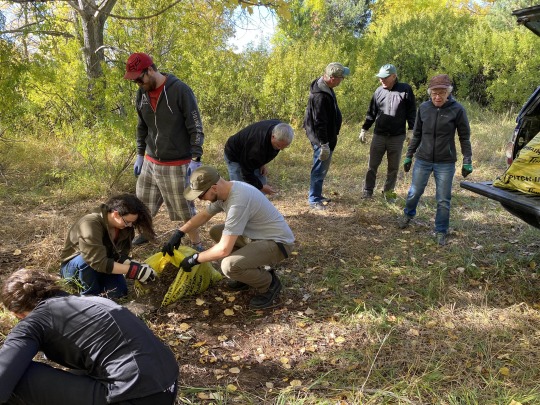
View On WordPress
#2024#advocacy#April 26 – April 29#biodiversity#biodiversity guardians#Biodiversity Inventory#biodiversity prevail#birds#Citizen Science#City Nature Challenge#city of bridges#city of change#combatting plastics#conscious living#conservation#Conservation Efforts#discovery#document biodiversity#early detection#Earth day#Earth Day initiatives#Earth Day theme#Earth&039;s battle cry#Earth&039;s defenders#Earth&039;s guardians#Earth&039;s resilience#Earth&039;s SOS#Earth&039;s well-being#eco-awareness#eco-conscious
0 notes
Text
How to Persuade Others to Care about Biodiversity?
Back in Rhode Island when I was bicycling 6 or so miles from Providence – to swim in the only nearby lake at Lincoln Woods State Park – I encountered a dead deer along the road. The Police were already standing next to it. It was upsetting. It’s an area where Power lines cut through the trees, which in fact provide space to allow animals (with no residential properties or fences blocking their…
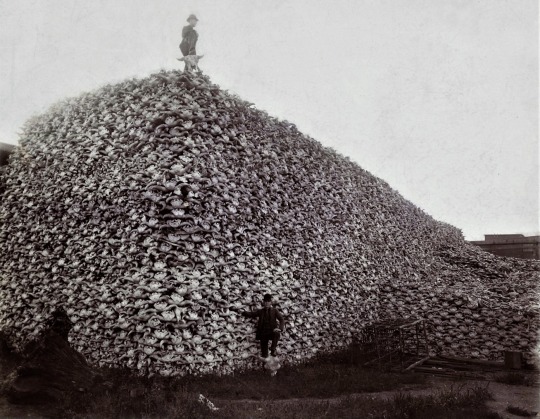
View On WordPress
#Alan Cox#Anthropocentrism#biodiversity#climate change#Climate Change Speeding Toward Catastrophe#conservation#Earth Guardians#Ecocide#Eileen Crist#empathy#feel#George Monbiot#global warming#habitat loss#human encroachment#human impact#human induced global warming#Intergovernmental Panel on Climate Change#IPCC#Life without wild things#love#mass extinction#Noam Chomsky#NWF#oil industry#petroleum poisoning#rewilding#technocratic age#Tomdispatch#wilderutopia
2 notes
·
View notes
Text
A Little Break From The Insanity!
With only about three exceptions, every news story I have seen today (and I’ve seen at least 85 news stories today) have been about … you know, that ‘man’, the former guy who brings on nausea every time I have to see his ugly mug or read about him. I do not wish to write about he-who-shall-remain-unnamed. I do not wish to think about or hear about him. Nor do I wish to write about the war…

View On WordPress
0 notes
Text
"Inspired by an innovative Chilean forest restoration effort, the English town of Lewes is enlisting the help of dog walkers to rewild a local nature reserve.
Heavily degraded by foot traffic, the project co-opts dogs’ tendency to run about in the woods to spread wildflower seed from saddlebags strapped to a harness around the dog’s abdomen.
The idea mimics the function that wolves once played in that part of England, roaming over vast distances getting grass and flower seeds stuck in their coat, only to fall off and germinate somewhere else.
This helter-skelter seed-spreading is actually how many plants evolved to reproduce, and it’s key to maintaining a biodiverse and native ecosystem.
“We’re really interested in rewilding processes, but they often involve reintroducing big herbivores like bison or wild horses,” said manager Dylan Walker from the Railway Land Wildlife Trust who organized the project back in 2019.
“In a smaller urban nature reserve it’s really hard to do those things. So, to replicate the effect that those animals have on the ecosystem we aimed to utilize the vast number of dog walkers that are visiting the nature reserve daily.”
The saddlebags are filled with a variety of perennial plant seeds mixed together with sand. This allows the seed to be spread for longer across larger distances, while also providing a helpful tracking sign to inform the Trust’s employees where dogs are walking.
THE REWILDING MOVEMENT IN ENGLAND…
Salmon Return to the Heart of UK for First Time in 100 Years After Dam Removal: ‘It’s very rewarding’
‘Give Nature Space and it Will Come Back’: Rewilding Returns Endangered Species to UK Coast
Farmer Combats Flooding by Returning Creeks to Nature: ‘Wildlife That Has Come is Phenomenal’
Finally Rid of Invasive Shrubs, Scientists Use Lichen to Regrow the Celtic Rainforest in Loch Lomond, Scotland
2 Beavers Named Hazel and Chompy Reintroduced to English County–the First Ones to Live Here in 400 Years
“I signed up because it sounded like such a good fit. I was asked to place a harness on my chocolate cocker spaniel called Bertie and he ran around spreading seeds like wolves used to do many years ago,” Cressida Murray, a dog walker who regularly uses the nature reserve, told The Guardian.
Wolves were persecuted to extinction in England as early as the reign of Henry VII, who reigned during the latter third of the 15th century.
“A community-based project like this not only helps engage and teach people about the ecological impacts of wildlife but also allows us to make our wildlife and environments richer in the process,” said Walker."
-via Good News Network, July 30, 2024
#rewilding#cocker spaniel#dogs#doggos#animals#england#uk#wolves#ecosystem#ecology#wildflowers#seeds#plants#hope#dog walking#nature reserve#good news
3K notes
·
View notes
Photo

Water wars: meet the guardians of one of Europe’s most vital wetlands Doñana national park in Andalucía, Spain, is being threatened by drought, over-consumption and rightwing MPs. Seven people who work there describe the fragile ecosystem and what it means to themIn the heart of Spain’s Doñana national park, a battle is being waged to safeguard one of the most important wetlands in Europe. Doñana, with its impressive landscapes and extraordinary biodiversity, hosts an estimated 6 million migratory birds every year. But its fate hangs in the balance.Despite declining water supplies, illegal wells and encroaching strawberry farms, and amid warnings from Unesco and the European Commission, the People’s party (PP) and far-right Vox party in the Andalucían regional government are pushing to legalise irrigation in the park, which straddles the provinces of Huelva and Seville in south-west Spain. Continue reading... https://www.theguardian.com/environment/2023/aug/10/water-wars-meet-guardians-one-of-europes-vital-wetlands-donana-national-park-spain
#Biodiversity#Spain#Europe#Conservation#Environment#Wildlife#Birds#Animals#Global development#Endangered habitats#Ofelia de Pablo and Javier Zurita#The Guardian
0 notes
Text
As the link between animal agriculture and climate breakdown becomes clearer, if anything, we are seeing more ordinary people falling over themselves to defend an industry that is destroying our planet, polluting our communities, exploiting animals and human workers. This is especially worrying to see from leftists, in spaces that are supposed to be progressive. I promise you, you do not need to spend your time greenwashing leather and wool, repeating blatant industry propaganda about veganism, 'regenerative agriculture' or whatever other buzzword they're using to sow doubt this week. The industry already spends millions of your dollars to lobby our politicians and influence public opinion; they don't need you to do it for free.
Vox – The greenwashing of wool explained
New Republic – The comforting lie of climate-friendly meat
Guardian – Big Beef’s climate messaging machine
The Breakthrough – Is Feedlot Beef Better for Environment?
International Journey of Biodiversity – Misinformation on Science of Grazed Ecosystems
Food Climate Research Network – Grazed & Confused
Science 2.0 – The regenerative ranching racket
DeSmog – A guide to six greenwashing terms
Truthdig – The backlash to plant-based meats
Independent – Meat & dairy industries downplaying role in climate crisis using tobacco tactics
Guardian – Meat & dairy lobbyists turn out in record numbers at COP28
Greenpeace – How Big Agriculture is borrowing Big Oil’s playbook at COP28
Guardian – Plans to present meat as ‘sustainable nutrition’ at Cop28 revealed
Guardian – Ex-officials at UN farming body say work on methane emissions was censored
Guardian – How UN food body played down role of farming in climate change
QZ – The meat industry blocked the IPCC’s attempt to recommend a plant-based diet
The Times – Red Tractor farms more likely to pollute environment
Influence Map – European meat & dairy industry weaken EU’s climate policies
The Grocer – Meat Industry lobbying behind cultured meat bans
Food Unfolded – Truth, tactics and the mist of meat lobby science
Business Green – Climate lobbying: Are meat and dairy lobbyists the ‘new merchants of doubt’?
245 notes
·
View notes
Text
The full extent of the damage in Gaza has not yet been documented, but analysis of satellite imagery provided to the Guardian shows the destruction of about 38-48% of tree cover and farmland. Olive groves and farms have been reduced to packed earth; soil and groundwater have been contaminated by munitions and toxins; the sea is choked with sewage and waste; the air polluted by smoke and particulate matter. Researchers and environmental organisations say the destruction will have enormous effects on Gaza’s ecosystems and biodiversity. The scale and potential long-term impact of the damage have led to calls for it to be regarded as “ecocide” and investigated as a possible war crime.
[...]
He Yin, an assistant professor of geography at Kent State University in the US, who studied the damage to agricultural land in Syria during the 2011 civil war, analysed satellite imagery showing that up to 48% of Gaza’s tree cover had been lost or damaged between 7 October and 21 March. As well as direct destruction from the military onslaught, the lack of fuel has led to people in Gaza having to cut down trees wherever they can find them to burn for cooking or heating. “It’s whole orchards gone, only soil left; you don’t see a single thing,” Yin says. Independent satellite analysis by Forensic Architecture (FA), a London-based research group that investigates state violence, found similar results. Before 7 October, farms and orchards covered about 170 sq km (65 sq miles), or 47% of Gaza’s total land area. By the end of February, FA estimates from satellite data that Israeli military activity had destroyed more than 65 sq km, or 38% of that land. As well as cultivated land, more than 7,500 greenhouses formed a vital part of the territory’s agricultural infrastructure. Almost a third have been destroyed entirely, according to FA’s analysis, ranging from up to 90% in the north of Gaza to about 40% around Khan Younis.
514 notes
·
View notes
Text


The way most people talk about climate change we are led to believe we all have an equal part in creating the capitalist nightmare we live in, but that’s a lie. The unsustainable and extractive nature of capitalism grew directly from the ideological and material foundations of European colonization. We cannot hold the entire human species responsible for that. It’s victim blaming.
The vast majority of waste is produced by the same people and institutions who hold power. Fighting for our planet, the health of our land, our food, our homes, our communities, is where the fight against capitalism and white supremacy collide. Any fight for environmental justice must also be a fight for racial justice because BI&POC are the ones who disproportionately bear the weight of climate change.
White Settler Colonialism Is Destroying the Planet, Not Poor BI&POC
Don’t believe the Malthusian and eco-fascist myth that there are too many people on the planet to care for. This is a lie peddled by capitalists, eugenicists, and people who advocate for genocide. We know that every landbase has its limit for how much life it can support (indigenous peoples have been saying this for hundreds of years), but “overpopulation” rhetoric is overwhelmingly used as a means to enforce colonial hierarchies where wealthy white people can maintain lives of access and privilege while poor BI&POC barely survive.
Instead of telling poor BI&POC to have less children or to stop wanting better lives, we should build a movement to fight climate change which centers racial justice, abolishes capitalism, and forces wealthy, predominately white populations to stop hoarding resources.
Here are some Earth Day facts for tomorrow so you don’t fall for the lies:
Just 100 companies are responsible for 71% of global emissions. (Source: the Guardian)
Black communities are exposed to 56% more pollution than is caused by their consumption. For Latinx communities, it is 63%. (Source: American Journal of Public Health)
97% of waste produced in the United States is corporate waste. 80% of businesses are owned & operated by white people. (Source: “The Story of Stuff” & US News)
Indigenous peoples make up less than 5% of the planet’s human population, yet they are protecting 80% of its biodiversity. (Source: National Geographic)
The world’s richest 10% produce half of carbon emissions while the poorest half contribute only 10%. (Source: Oxfam)
The world’s wealthiest 16% use 80% of the planet’s natural resources. (Source: CNN)
We are not all equally “responsible.” White settler colonialism and capitalism are destroying the planet, not poor BI&POC.
#climate change#climate crisis#white supremism#community building#practical anarchy#practical anarchism#anarchist society#practical#revolution#anarchism#daily posts#communism#anti capitalist#anti capitalism#late stage capitalism#organization#grassroots#grass roots#anarchists#libraries#leftism#social issues#economy#economics#climate#ecology#anarchy works#environmentalism#environment#solarpunk
176 notes
·
View notes
Text
Excerpt from this story from Inside Climate News:
With the Earth at its most degraded point in recorded history, and humans making insufficient efforts to prevent the destruction of ecosystems, a growing number of scientists, lawyers and activists are proposing a potential solution that challenges more than 350 years of global governance.
The idea is to get countries and civil society to sign onto a declaration that recognizes Antarctica and its surrounding Southern Ocean as its own autonomous legal entity, similar to a sovereign country. Along with that status comes the right of Antarctica to participate in decision making that affects it, like the United Nations conferences on climate and biodiversity.
On Thursday, advocates with the group Antarctic Rights unveiled a draft declaration that would do just that. The document also says the continent possesses inherent rights to exist and continue its natural cycles “free of human disruptions.” Thursday’s event took place on the sidelines of the 16th gathering of parties to the U.N. Convention of Biological Diversity being held in Colombia.
Since 1959 the region has been governed by the Antarctic Treaty System, a Cold War-era pact designed to promote peace and scientific cooperation south of 60 degrees latitude. While largely successful at achieving those goals, that system has been criticized for making little progress on issues like environmental protection in recent years. Political deadlock, for instance, has prevented the creation of new Marine Protected Areas and the implementation of existing ones in the region.
Antarctic Rights’ proposal is part of the growing rights of nature movement, which has cemented various rights of ecosystems and individual species, like sea turtles, into legislation and court rulings in more than a dozen countries. The worsening climate and biodiversity crises have helped the movement gain momentum. In Ecuador, frogs have taken mining companies to court and won. In Colombia, courts have appointed human-guardians to oversee the rights of the Atrato River. There’s even precedent for giving nature a seat in the boardrooms of companies.
But never has an idea been set forth to put a natural entity on par with nation-states. Since the 1600s, international law has treated national governments as the primary force in global decision making.
Critics of that structure, which political scientists call the Westphalian system, argue that it is ill-equipped to handle many of today’s problems, including climate change and environmental destruction, which span national borders. Advocates argue that the nation-state system has an inherent and narrow focus on short-term human interests, neglecting other forms of life.
59 notes
·
View notes
Text
National Holidays in the Ninja Villages + Bonus
I've had this idea in mind for a while, and now I finally got to write it down. Feel free to use these for your own works. Please tag me so I can read em all! <33
Iwagakure: The Lunar Lights of Gratitude The moon has a special place in the heart of every Iwa citizen. To them, it is a part of the earth, now observing its mother body from space. So naturally, the spectacle of a blue/super moon is a special occasion in Iwagakure. To honor and greet the moon, which is actually called "daughter" in the earth country's language, large fireworks are organized every new moon after a blue moon. As previously established, the earth country's firework industry is the largest, which Iwa shinobi are very proud of. Lighting the sky on fire and turning night into daytime is the Iwa way of giving back some of the light that the moon gives us at night.
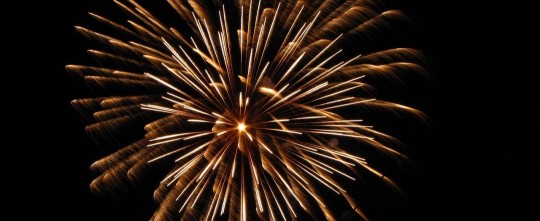
Kirigakure: The Moonshine Sea Festival Despite the rivalry between the land of earth and the land of water, there is one thing they have in common, which is their spiritual connection to the moon and space. To water country citizens, especially the fishermen, the moon is a protector and guardian of the night, along with the stars. They strengthen the their connection to their biggest source of both faith and fear: the sea. The special climate in the water country, combined with its great biodiversity give a great habitat for biolumescent plankton, turning the sea itself into a starry night sky. It is one of the only pieces of culture that has been preserved, since the celebration itself was founded by the water country's union of fishermen, who don't belong to a particular clan with a kekkei genkai; most of the kekkei genkai wielders in Kiri have been wiped out, along with their culture, traditions and religions.

Sunagakure: Winter's Return The wind country is often ravaged by agonozingly hot summers, sand storms and heat waves are not a rarity in this country. While foreigners might groan and roll their eyes at the thought of the return to cold, foggy winter days, in Sunagakure it is a day for celebration. On the day where the sun stays for the longest, in the middle of the year, a large celebration is held across the nation. The way it is celebrated is different from family to family, and every Suna family is convinced that their way is the right one. Typically, markets are closed the whole day, and any missions rank B or below are halted for the day.
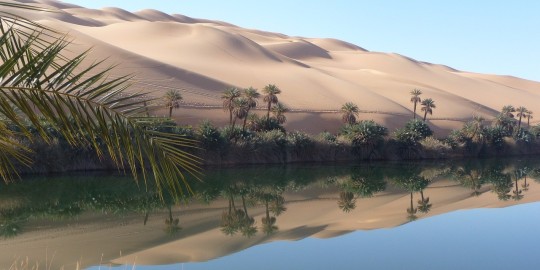
Kumogakure: Whale Festival of Generosity During winter, whales can be found emigrating along the lightning country's coast line, towards the land of iron. This holiday once came to be to celebrate the whales emigration towards a more prosperous habitat to mate and provide enough food for their young - a truly generous gesture. Over the years, many kumo shinobi have forgotten the old tale behind this festival, and it has turned into more of a mere gift giving occasion. And yet, it is widely popular and celebrated throughout the whole country.
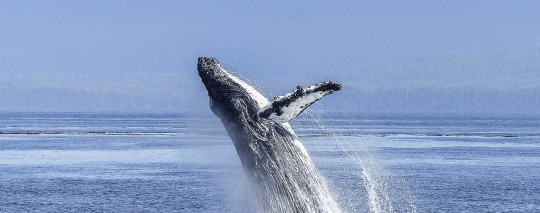
Konoha: Cherry and Plum Blossom Viewing In Konoha, Hanami is annually celebrated. It is a custom celebrating the transitionary nature of cherry and plum blossoms blooming in spring.
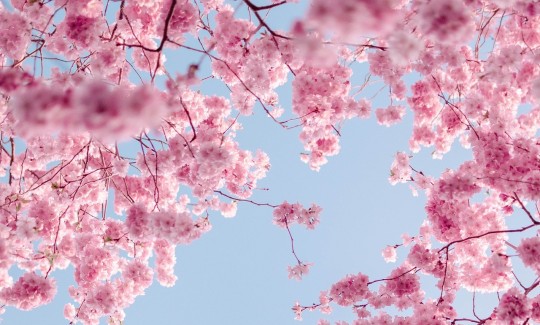
BONUS: Uchiha Clan Honoring one's ancestors and traditions is of high importance to the Uchiha. Every year, on a clear fall night, the whole clan gathers together to light up little candles using their katon. The tealights are arranged in the Uchiha crest and left to light up the night and the clan share the evening together eating dinner, drinking hot tea and praying at the nakano shrine.

That's all, folks!
#naruto#naruto shippuden#naruto headcanons#naruto scenarios#naruto imagines#naruto fanfiction#headcanons#naruto meta#naruto worldbuilding#worldbuilding#konohagakure#kirigakure#iwagakure#kumogakure#sunagakure#uchiha#uchiha clan
160 notes
·
View notes
Text


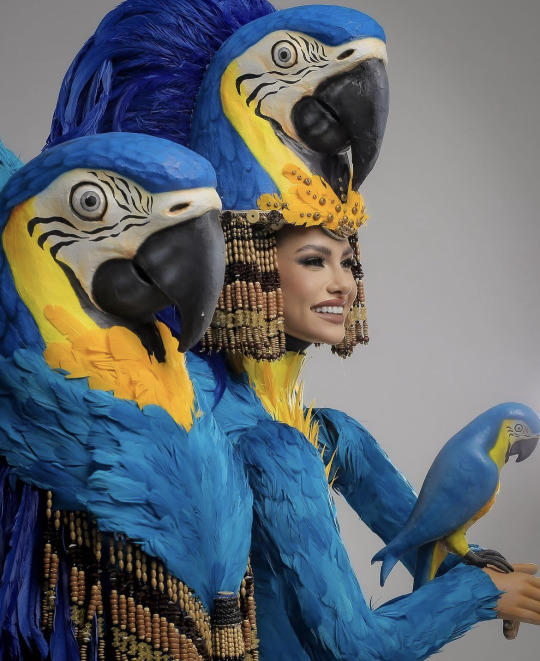

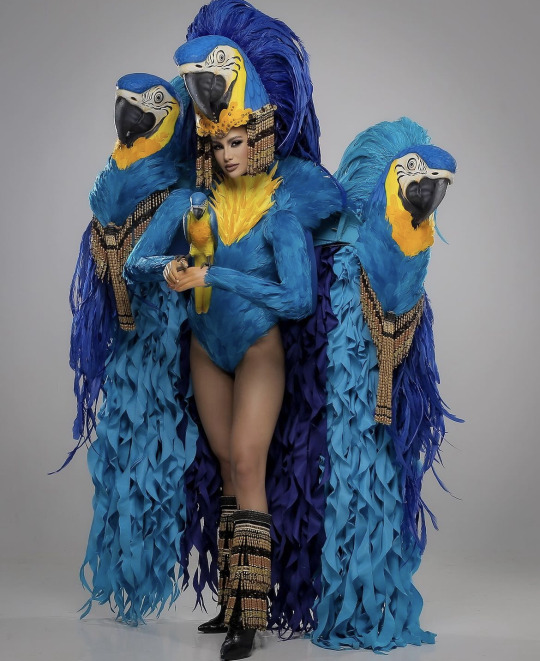


Miss Universe Brazil 2023 National Costume
This year, Maria Brechane, Miss Universe Brazil, dazzles with a unique tribute to the majestic Blue Arara, representing not only the beauty, but the cultural and natural richness of Brazil. The costume is a symphony of shades of blue, a visual poem that celebrates the preservation and stunning diversity of our country, incorporating elements of the Amazon; indigenous heritage; the contagious energy of cultural festivities such as carnivals and folk festivals; and the joy that characterizes our nation. By incarnating two versions of the Blue Mackerel, Maria highlights not only the fight for the survival of this species, but also the remarkable presence of the Canindé Mackerel, symbolizing the diversity that extends from the Atlantic Kill to the heart of the Amazon Rainforest. More than a representation of the Amazon, the Blue Mackerel becomes an ambassador for the entire nation. Mary, by dressing and carrying these magnificent birds, becomes a winged guardian, conveying the vital message of conservation and highlighting the dangers that threat these incredible creatures and the biodiversity they represent.
#listen I know I said I would wait but I had to post this#miss universe#Brazil#pageant#national costume#national costume contest#miss universe 2023
192 notes
·
View notes
Text
Unveiling the Green Guardian

View On WordPress
#Bahá&039;í Faith#Biodiversity Preservation#Climate Action#Climate Change Solutions#Climate Resilience#conservation leadership#Conservation Legacy#Conservation Visionary#Conservation Wisdom#Conservationist Pioneer#cultural harmony#Eco-Activist#Eco-Champion#Eco-Philanthropy#Eco-Sustainability#Eco-Warrior#environmental advocacy#environmental awareness#Environmental Education#Environmental Guardian#Environmental Harmony#Environmental Hero#environmental impact#Environmental Inspiration#Environmental Legacy#Environmental Philanthropy#Environmental Pioneer#environmental steward#environmental stewardship#Environmental Visionary
0 notes
Text
Amazon Indigenous groups launch alliance at COP16
Key priorities include legal security for Indigenous territories and direct financing mechanisms for Amazonian Indigenous peoples

Indigenous organizations from nine Amazonian countries have formed an alliance in Cali, Colombia, representing 511 groups dedicated to defending the Amazon rainforest, traditional peoples, biodiversity, and the global climate. Their primary demand is to be recognized as climate authorities, a notion reflected in their coalition’s name, the Indigenous Amazon G9.
“We want the COPs to acknowledge the demarcation and recognition of indigenous lands as climate and biodiversity policies,” said Angela Amanakwa Kaxuyana, a leader from the Kahyana people in northern Pará, bordering Suriname.
“Another point is for indigenous peoples to be recognized as biodiversity and climate authorities,” Ms. Kaxuyana told Valor. “We are often mentioned as guardians of the forest and essential for climate balance, but not as authorities.”
The alliance was announced over the weekend at COP16, the biodiversity conference running until November 1. “It’s an agenda for collaboration among nine Amazon basin countries aimed at international influence leading up to COP30 in Belém,” she added.
Continue reading.
#politics#brazil#environmentalism#environmental justice#indigenous rights#international politics#brazilian politics#Colombia#Bolivia#Ecuador#Guyana#Suriname#French Guiana#Peru#Venezuela#amazon rainforest#cop16#image description in alt#mod nise da silveira
33 notes
·
View notes
Text
Recent reports in Politico and The Guardian make a now-familiar but false claim: California’s wildfires, particularly the devastating events around Los Angeles, are evidence of an accelerating “climate crisis.” The claims made in these stories are false. Data do not show wildfires are getting worse. The stories rely on oversimplified, headline-grabbing narratives that blame climate change without examining other critical variables. In addition, they continue to make the most basic mistake of conflating weather events with long-term climate change.
California’s landscapes have evolved alongside fire for millennia. Long before industrialization, periodic wildfires swept through these ecosystems, clearing out excess vegetation and promoting biodiversity. This is not conjecture, rather it is well-documented in history. Native American tribes understood this and used controlled burns to manage the land.
The problem today is not that California has fires—it always has. The problem is that modern fire suppression policies disrupted this natural cycle. For much of the 20th century, aggressive efforts to extinguish all fires, combined with the abandonment of Indigenous fire management techniques, allowed vegetation and underbrush to accumulate to dangerous levels. Other factors include a shift in forest management philosophy leading to decline in logging, resulting in overgrown forests with build-up of fuel, and increasing numbers of people moving to areas historically prone to wildfires. This surplus fuel creates the conditions for catastrophic fires and the increased population and all the buildings that come with them, leads to greater tragedy and cost when fires occur. Climate Realism has discussed these facts on multiple occasions, here, here, here, and here, for example.
The media conveniently ignores this, preferring to frame every wildfire as an apocalyptic omen of climate change. By failing to include this historical context, publications like The Guardian and Politico mislead their readers into believing wildfires are a “new normal” caused solely by greenhouse gas emissions.
Also, the latest report from the Intergovernmental Panel on Climate Change (IPCC) notes several factors that have been cited by media outlets as “enhancing” the fire situation that the IPCC says have not worsened as the climate has modestly changed, nor are they expected to worsen in the future. See the table below, and note the factors boxed in red.
14 notes
·
View notes
Text
"Discarded shells from restaurants and hotels are being used to restore damaged oyster ecosystems, promote biodiversity and lower pollution in the city’s bays...
Nestled in between the South China Sea and the Pearl River Delta, Hong Kong has been seen historically as an oyster hotspot. “They have been supporting our livelihood since ancient times,” says Anniqa Law Chung-kiu, a project manager at the Nature Conservancy (TNC) in Hong Kong. “Both oysters and their shells are treasures to humans.”
Over the past five decades, however, the city’s sprawling urban development, water pollution, as well as the over-harvesting and frequent seafloor dredging by the lime industry – which uses the crushed shells to make construction material – have destroyed Hong Kong’s oyster habitats and made the waters less hospitable for biodiversity.
The more oyster colonies falter, the worse the problem gets: oysters are filter feeders and purify water by gobbling up impurities. Just one Hong Kong oyster can filter up to 200 litres of water a day, more than any other known oyster species. But decades of rapid industrialisation have largely halted their water-purifying services.
The depletion of Hong Kong’s natural oyster reefs also affects the ability of local farmers to sustainably cultivate their oysters in a healthy environment, denting the reputation of the city’s 700-year oyster farming tradition, designated by Unesco as an “intangible cultural heritage”.
Inhabitants of the coast feel abandoned, says Ken Cheng Wai-kwan, the community leader of Ha Pak Nai on Hong Kong’s Deep Bay, facing the commercial city of Shenzhen in China. “This place is forgotten,” Cheng says. “Oysters have been rooted here for over 400 years. I ask the question: do we want to lose it, or not?”
A group of activists and scientists are taking up the challenge by collecting discarded oyster shells and recycling them to rebuild some of the reefs that have been destroyed and forgotten in the hope the oysters may make a comeback. They’ve selected locations around the island where data they’ve collected suggests ecosystems still have the potential to be rebooted, and there are still enough oyster larvae to recolonise and repopulate reefs. Ideally, this will have a positive effect on local biodiversity as a whole, and farming communities.
Farmers from Ha Pak Nai were among the first to hand over their discarded shells to the TNC team for recycling. Law’s team works with eight oyster farmers from Deep Bay to recycle up to 10 tonnes of shells every year [over 22,000 pounds]. They collect an average of 870kg every week [over 1,900 pounds] from 12 hotels, supermarkets, clubhouses and seafood restaurants in the city, including some of its most fashionable establishments. About 80 tonnes of shells [over 176,000 pounds] have been recycled since the project began in 2020.
Restaurants will soon be further incentivised to recycle the shells when Hong Kong introduces a new fee for waste removal – something that is routine in many countries, but only became law in Hong Kong in July and remains controversial...
Preliminary data shows some of the restored reefs have started to increase the levels of biodiversity, but more research is needed to determine to what extent they are contributing to the filtering of the water, says Law.
Scientists from the City University of Hong Kong are also looking to use oyster shells to increase biodiversity on the city’s concrete seawalls. They hope to provide tiny, wet shelter spots around the seawall in which organisms can find refuge during low tide.
“It’s a form of soft engineering, like a nature-based solution,” says Charlene Lai, a research assistant on the team."
-via The Guardian, December 22, 2023
#oyster#oyster farming#sea shells#seafood#hong kong#ecosystem restoration#biodiversity#ecosystem#water pollution#clean water#cultural heritage#marine life#marine animals#marine science#good news#hope
809 notes
·
View notes
Photo

How an Iberian rewilding plan aims to repopulate ‘empty Spain’ Przewalski’s horses, black vultures and semi-wild cattle could revive biodiversity and economy in corner of eastern SpainIn a small clearing between the oak trees of a forested plateau in the Iberian highlands in eastern Spain, a group of Przewalski’s horses graze on grass and small shrubs; the pale beige of their belly contrasting against the greyish green of the landscape.Short and stockily built, the endangered Przewalski’s horse is considered the world’s last wild horse. Originating from the open steppes of central Asia, they were driven to extinction in the wild and successfully reintroduced to their native habitats at the turn of the century. Continue reading... https://www.theguardian.com/world/2023/jul/07/iberian-rewilding-project-aims-repopulate-empty-spain
#Spain#Rewilding#Wildlife#Animals#Biodiversity#Environment#Europe#World news#Chloé Farand#The Guardian
0 notes